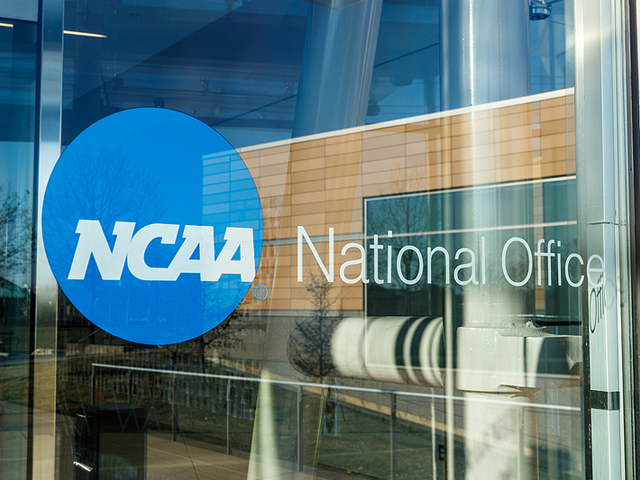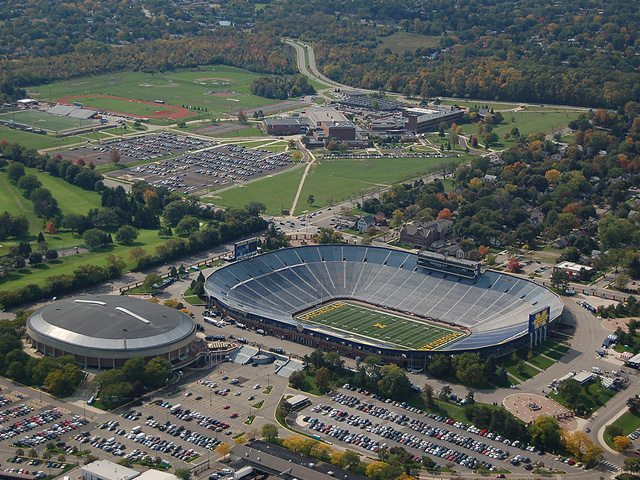
Engaging in competitive college sports offers students tremendous advantages. With numerous benefits both immediate and lifelong, there are endless chances to compete, grow, learn and succeed.
Typically, student-athletes have access to the best coaches, top medical care, academic support and world-class facilities and equipment. Statistics show that student-athletes tend to graduate at higher rates compared to their peer student body. This could be due to receiving more one-on-one attention and follow-up. Often, student-athletes are better prepared for the challenges of adulthood compared to non-athletes.
It is essential that any athletes who are heading for college and wish to enroll in a Division I or Division II facility need to register with the NCAA Eligibility Center. This ensures they have met the amateurism standards and are academically prepared for their college classes.
Playing Division I Sports
Prior to competing in NCAA sports, there are specific eligibility standards that must be met. Before one registers at a Division I school, one must first register with the NCAA Eligibility Center. Depending on which grade you choose to apply, check out the following guidelines.
Grade 9
Receive a list of the NCAA core courses by speaking with your school counselor to determine that you are enrolled in the correct courses. It will be much easier to satisfy the requirements if you plan ahead.
Grade 10
Register with the NCAA Eligibility Center by visiting eligibilitycenter.org, and following the instructions.
Grade 11
Submit your ACT or SAT scores to the NCAA after you complete the tests.
Speak with your school counselor to ensure your classes are up to date and that you are scheduled to graduate on time with the required amount of NCAA core courses.
Ask your school counselor at year-end to send the NCAA Eligibility Center your results by having them upload your official transcript.
Grade 12
If necessary, take the ACT or SAT again and send your test scores to the NCAA.
Complete your remaining NCAA core courses.
After graduating, speak with your school counselor to have them send in your proof of graduation and your final official transcript to the NCAA Eligibility Center.
Academic Eligibility for Division I
During your initial year at any Division I school, to be eligible to compete in NCAA sports you must meet the following requirements and graduate from high school:
Finish 16 core courses:
- 3 years of math Algebra 1 or higher
- 4 years of English
- 2 years of physical or natural science including 1 year of lab science if it is offered at your high school
- 2 years of social science
- 4 extra years of math, English, physical or natural science, foreign language, philosophy, or comparative religion and social science
- 1 extra year of English, physical or natural science, or math
Additionally, you need to complete the following:
Finish ten core courses:
- 7 in math, English, or physical or natural science before entering your seventh semester.
- After you start your seventh semester, you cannot replace or repeat any of those ten classes to improve your GPA.
- Earn an SAT combined score or ACT sum score that matches your core-course GPA on the sliding scale for Division I. This scale balances your core-course GPA and your test score. If you end up with a low test score, you will require a higher core-course GPA for eligibility. Conversely, if you have a low core-course GPA, you will require a higher test score for eligibility.
- Earn a minimum of a 2.3 GPA in your core classes.
What happens if I fail to meet the requirements?
Note that if the Division I academic requirements are not met, you may be ineligible to compete in sports during your first college year. If you do qualify as an academic redshirt, however, you may be able to attend practice during your initial college term and be eligible for an entire year of an athletics scholarship.
How Do I Qualify As An Academic Redshirt?
You need to graduate high school and meet the academic requirements listed below to qualify as an academic redshirt.
Finish 16 core courses:
- 2 years of physical or natural science including 1 lab science year if offered through your high school
- 3 years of math Algebra 1 or higher
- 4 years of English
- 1 year of math, English, or physical or natural science
- 2 years of social science
- 4 extra years of physical or natural science, math, English, foreign language, social science, philosophy, or comparative religion
- Earn an SAT combined score or ACT sum score that matches your core-course GPA on the Division I sliding scale.
- Earn at least a 2.0 GPA in your core classes.
If you are worried that you might not meet the Division I academic requirements, consider the following actions to take:
- Seek study help or tutoring in struggling subject areas.
- Follow your school policies and work within the set rules to achieve success.
- Hang onto your coursework in the event the NCAA asks to review your record due to some issue or irregularities, you may have to provide your work for backup.
- Graduate on time. Student-athletes who are bound for college and graduate on time are allowed by Division I schools to take one core course during the year post high-school graduation.
- Speak with your high school counselor for accountability and advice. Check with the college you hope to attend and speak with the compliance office or admissions.
What Is Amateurism?
Amateurism is promoted by the NCAA to establish a level playing field for all student-athletes. The young women and men who play college sports are considered first to be students and secondly, athletes. If you want to attend a Division I school and compete in NCAA sports, you must be an amateur athlete to be eligible.
Playing Division II Sports
You need to register with the NCAA Eligibility Center to compete in NCAA sports via a Division II school. Meet the initial eligibility requirements and stay organized by following the below outline depending on when you apply.
Grade 9
Obtain a list of the NCAA core courses at your high school to ensure you are enrolled in the correct classes.
Grade 10
Visit eligibilitycenter.org to register with the NCAA Eligibility Center.
Grade 11
Submit your ACT or SAT scores to the NCAA after completing the exams.
Speak with your counselor to ensure you are on track to graduate on time with the right number of NCAA core courses.
Ask your counselor at year-end to send the NCAA Eligibility Center your official transcript.
Grade 12
If necessary to secure better grades, take the ACT or SAT and submit your scores to the NCAA.
Complete the last of your NCAA core courses.
Visit eligibilitycenter.org. to finish all amateurism and academic questions in your NCAA Eligibility Center account.
Ask your school counselor to send in proof of graduation and your final official transcript to the NCAA Eligibility Center after you graduate.
Complete your final NCAA core courses.
Academic Eligibility for Division II
For NCAA sport competing eligibility during your first year at a Division II school, you need to meet academic requirements for your GPA, grade-point average, your core classes and your test scores.
It is essential to meet the following requirements along with graduating high school:
Finish 16 core courses:
- 2 years of math Algebra 1 or higher
- 3 years of English
- 2 years of physical or natural science including 1 year of lab science if offered by your high school
- 2 years of social science
- 3 extra years of physical or natural science, math, or English
- 4 extra years of physical or natural science, math, English, philosophy or comparative religion, social science, or foreign language
- Earn an SAT combined score or ACT sum score that matches your core-course GPA with the sliding scale for Division II. This scale balances your core-course GPA with your test score. Therefore, you will require a higher core-course GPA if you earn a low test score to be eligible or a higher test score if you earn a low core-course GPA.
- In your core courses, earn a minimum of 2.2 GPA.
What happens if I don’t meet the eligibility requirements?
Note that you may not be allowed to compete in your first year at a Division II facility if you have not met their academic requirements. Although, student-athletes heading for college that do not meet Division II full qualifier standards will be considered a partial qualifier.
Any Division II partial qualifiers will be eligible to receive an athletics scholarship and are allowed to attend practice during their initial year of full-time enrollment at their Division II school. However, they will not be allowed to compete.
There are some positive steps you can take if you are worried that you may not be able to make the Division II academic requirements. Check out the following options to consider:
Look into local tutors or study clubs to get help on subjects in distress.
Speak with your high school counselor to gain accountability and advice. Contact the compliance office or the admissions at the college you are hoping to attend.
Make sure you are on schedule to graduate on time. Division II schools allow athletes who are bound for college that are graduating on time to take one core course during the year post high school graduation.
Do not stray from your school’s policies as working with the set rules is your best chance of success.
Hold onto your coursework in case the Eligibility Center needs to review your record in case there is some irregularity.
Playing Division III sports
The Division III schools offer student-athletes academic success and a competitive environment for athletics within an integrated environment. Division III schools focus on conference play and regional in-season play. They minimize potential conflicts between academics and athletics.
There are no athletics scholarships offered at Division III schools. However, seventy-five percent of student-athletes attending Division III schools will receive some kind of need-based or merit-based financial aid. Speak with your school counselor to obtain all of the details and have your questions and concerns answered.











